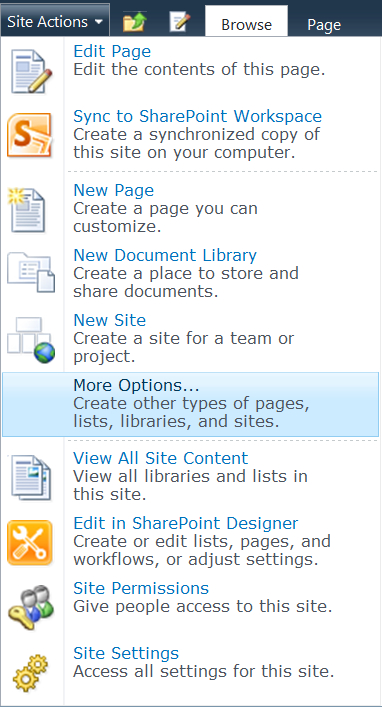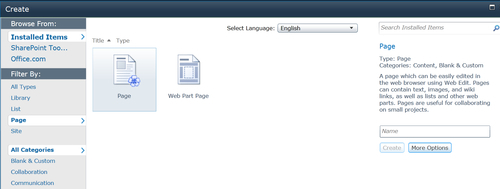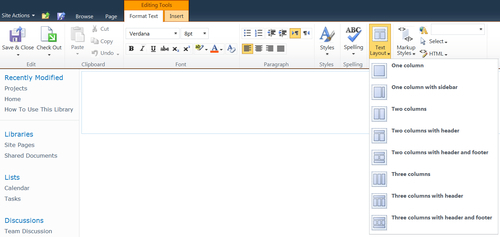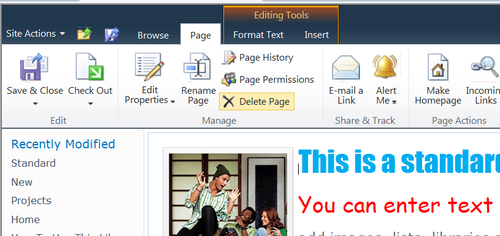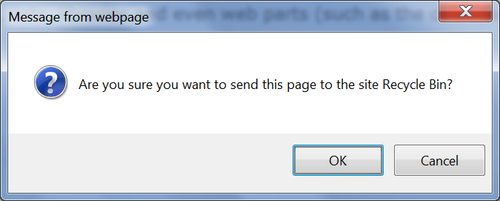In this chapter, we will take a look at the basic building blocks for displaying content on SharePoint sites: pages and web parts. We will discuss what a page is, how you create one, and how you can modify it. We will show how you can add functionality to pages with web parts. We will discuss the types of web parts and how to work with them.
When you create a site in SharePoint, a home page is automatically generated from a template. SharePoint pages organize content for presentation to users, and SharePoint sites will contain multiple pages for presenting information.
You might ask why you would want to create a page instead of including the same information in a document that you could post to a document library. One answer is that a SharePoint page brings the information on a page to the immediate attention of a wide audience. Another reason is to present the latest information using web parts that connect to other data sources. A document is a snapshot of information an author knows at the time of creating the document. The author can always update information in a document, but that is often a process done only periodically. Because of the live connections to the latest data, SharePoint pages and web parts can present the most up-to-date view of information to users.
You can create individual pages from templates that come with SharePoint. The templates provide ready-made layouts for organizing your information on a page, and this information can be in the form of text, images, lists, or small applications called web parts. We will discuss web parts later in this chapter.
For our purposes we will cover three types of pages: standard pages, web part pages, and publishing pages. In general, standard pages make it easy for you to enter and edit the text, images, and date on the page, whereas web part pages offer a more structured layout for adding only web parts to the page. We will take a look at all three types of pages, but focus on standard pages and web part pages.
Standard pages give you a less structured format than web part pages do, making it easier to format text and move items around on the page. You can add web parts to a standard page, but with more flexibility as to where you place them than you have with a web part page.
Note
Standard pages have the same format as wiki pages, and for that reason they sometimes are referred to as wiki pages. You will also hear standard pages referred to simply as pages.
The following screenshot is an out of the box standard page with some content that has been added and formatted:
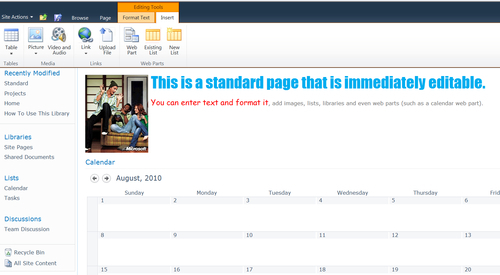
Web part pages have a structured layout. You can easily add web parts into this layout. The web part page is the best option if you are only going to include web parts on the page. The web part page gives more space to display web parts because there is no quick launch area on the left.
The following screenshot is a typical web part page, in edit mode, with some web parts inserted:

The preceding example shows the layout and the zones where you can add a web part.
While the structure of the web part pages is useful for presenting multiple web parts in a uniform layout, its tightly controlled layout does not make it the best option when you want to mix web parts with text, pictures, and other media.
As we will see, standard pages allow you much more flexibility in the layout of your information than you have with web part pages. You can include web parts on standard pages with more choice of how to integrate them with text and other media.
The third page type is the publishing page. Publishing pages are less restrictive than web part pages in their structure. They give you the freedom to include text, images, links, and web parts. The layout of publishing pages, however, provides more control of the layout than standard pages. Publishing pages are most useful for managing content on extranet and internet sites, where a consistent layout is required.
Publishing pages also include tools for approval workflows, and the staging processes necessary as content moves from a draft to the final published version.
Note
To make publishing pages available, an administrator has to activate the SharePoint server publishing site feature. This is not activated by default.
Standard pages are the easiest for most users to work with and provide greater flexibility for layout. We will focus on them for the rest of our discussion here.
To create a new page, follow these steps:
The page you create will look like this before you enter content:
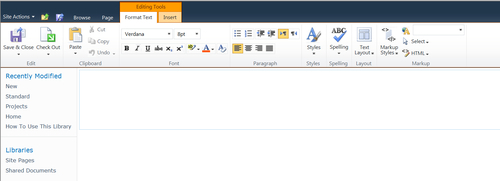
You can then begin entering text and format it with the Editing Tools available in the Format Text tab, or you can insert content with the tools on the Insert tab, as shown here:
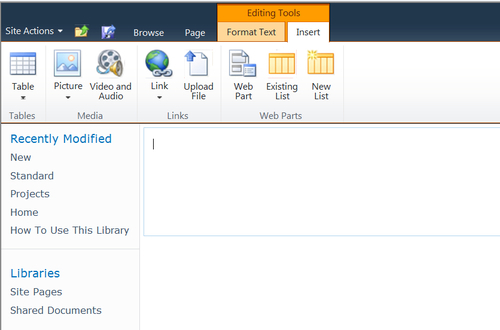
You can view the pages you create by clicking the quick link to the Site Pages library:
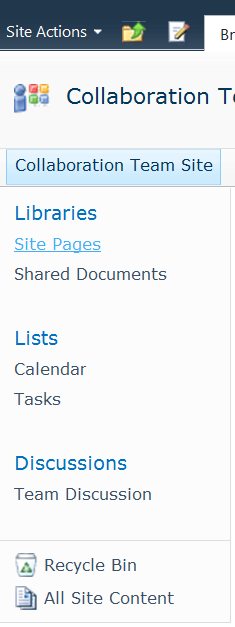
Then, choose the page you want to view:

Your page will display with the content you have added already:

When you return to a page at this point, it will not be in edit mode.
To edit a page, click the Edit icon that will appear if you have permission to edit pages on the site. It is the icon that looks like a paper and pencil, to the left of the Browse tab.

This will open the page in edit mode and display the ribbon with the Editing Tools:
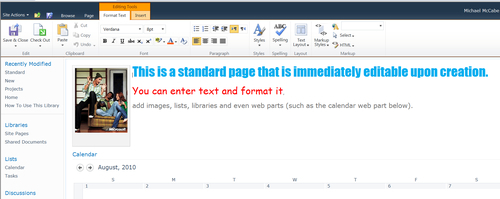
Select the text you want to format and then click the icon from the ribbon for the format you want to apply.
On the ribbon under Editing Tools, click the Format Text tab.

Tools include the usual groups of choices under the Format Text tab:
- Edit
- Clipboard
- Font
- Paragraph
- Styles
- Layout
- Markup
On the ribbon under Editing Tools, click the Insert tab.
Items that can be inserted in a wiki page are:
- Tables
- Media (pictures, video, and audio)
- Links
- Web parts (for example lists)
Note
Media can be added either from your local computer or from a URL. Refer to Chapter 12, Blogs, Wikis, and Other Web 2.0 Features, for a discussion on creating links on wiki pages.
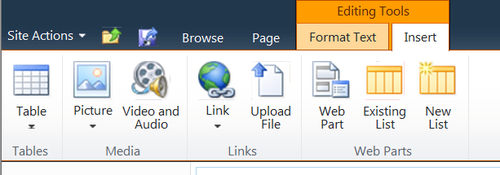
To insert media such as a picture, follow these steps:
- Click the Picture on the Insert ribbon.
- Browse for the picture file you want to insert.
- Click OK.
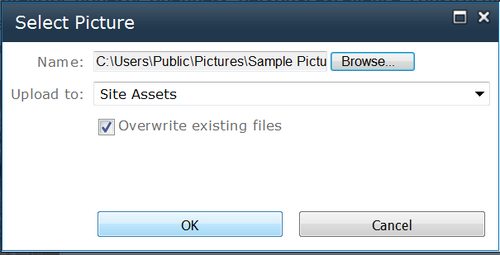
The image will be uploaded to the Site Assets library on your SharePoint site and will appear on your page where you can move or resize it within your text.


